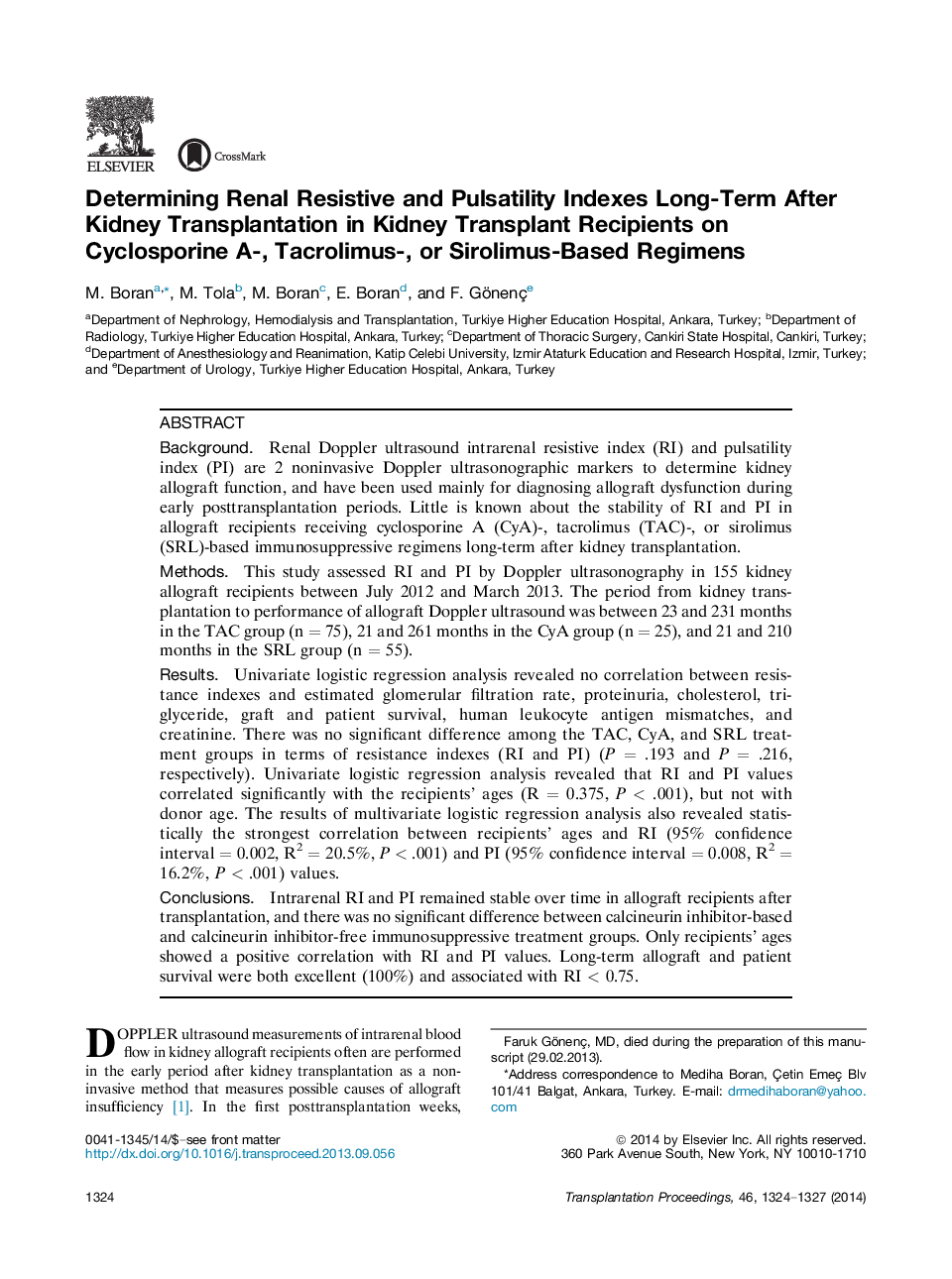| Article ID | Journal | Published Year | Pages | File Type |
|---|---|---|---|---|
| 6246241 | Transplantation Proceedings | 2014 | 4 Pages |
BackgroundRenal Doppler ultrasound intrarenal resistive index (RI) and pulsatility index (PI) are 2 noninvasive Doppler ultrasonographic markers to determine kidney allograft function, and have been used mainly for diagnosing allograft dysfunction during early posttransplantation periods. Little is known about the stability of RI and PI in allograft recipients receiving cyclosporine A (CyA)-, tacrolimus (TAC)-, or sirolimus (SRL)-based immunosuppressive regimens long-term after kidney transplantation.MethodsThis study assessed RI and PI by Doppler ultrasonography in 155 kidney allograft recipients between July 2012 and March 2013. The period from kidney transplantation to performance of allograft Doppler ultrasound was between 23 and 231 months in the TAC group (n = 75), 21 and 261 months in the CyA group (n = 25), and 21 and 210 months in the SRL group (n = 55).ResultsUnivariate logistic regression analysis revealed no correlation between resistance indexes and estimated glomerular filtration rate, proteinuria, cholesterol, triglyceride, graft and patient survival, human leukocyte antigen mismatches, and creatinine. There was no significant difference among the TAC, CyA, and SRL treatment groups in terms of resistance indexes (RI and PI) (P = .193 and P = .216, respectively). Univariate logistic regression analysis revealed that RI and PI values correlated significantly with the recipients' ages (R = 0.375, P < .001), but not with donor age. The results of multivariate logistic regression analysis also revealed statistically the strongest correlation between recipients' ages and RI (95% confidence interval = 0.002, R² = 20.5%, P < .001) and PI (95% confidence interval = 0.008, R² = 16.2%, P < .001) values.ConclusionsIntrarenal RI and PI remained stable over time in allograft recipients after transplantation, and there was no significant difference between calcineurin inhibitor-based and calcineurin inhibitor-free immunosuppressive treatment groups. Only recipients' ages showed a positive correlation with RI and PI values. Long-term allograft and patient survival were both excellent (100%) and associated with RI < 0.75.
